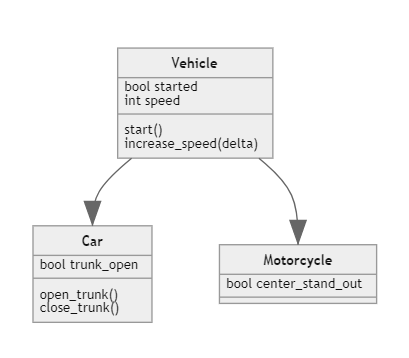In programming, it’s considered good style to reuse as much code as possible. There’s even a nice acronym for this practice, called DRY: Don’t Repeat Yourself. Classes help you to avoid repeating code because you can write a class once and create many objects based on it. However, they also help you in another way when using Python inheritance.
Table of Contents
Inheritance in Python
We’ve already seen inheritance at work, but you may not have realized it yet. Remember how I told you about Python constructors and that every class has a constructor (__init__), even when you don’t define one? It’s because every class inherits from the most basic class in Python, called object:
>>> dir(object)
['__class__', '__delattr__', '__dir__',
'__doc__', '__eq__', '__format__',
'__ge__', '__getattribute__', '__gt__',
'__hash__', '__init__', '__init_subclass__',
'__le__', '__lt__', '__ne__', '__new__',
'__reduce__', '__reduce_ex__', '__repr__',
'__setattr__', '__sizeof__', '__str__',
'__subclasshook__']Code language: Python (python)When I told you ‘everything in Python is an object’, I really meant everything. That includes classes and as you can see we can use dir() on a class too; the object class. It reveals that object has an __init__ method. Cool, isn’t it?
Python inheritance example
Classes can inherit properties and functions from other classes, so you don’t have to repeat yourself. Say, for example, we want our Car class to inherit some more generic functions and variables from a Vehicle class. While we’re at it, let’s also define a Motorcycle class. Schematically, it looks like this:

Inheritance maps to many real-life situations. Let’s see inheritance in action, based on the class diagram above. We’ll start with a generic Vehicle class:
class Vehicle:
def __init__(self, started = False, speed = 0):
self.started = started
self.speed = speed
def start(self):
self.started = True
print("Started, let's ride!")
def stop(self):
self.speed = 0
def increase_speed(self, delta):
if self.started:
self.speed = self.speed + delta
print("Vrooooom!")
else:
print("You need to start me first")Code language: Python (python)Now we can redefine our Car class, using inheritance:
class Car(Vehicle):
trunk_open = False
def open_trunk(self):
self.trunk_open = True
def close_trunk(self):
self.trunk_open = FalseCode language: Python (python)Our car inherits all methods and variables from the Vehicle class but adds an extra variable and two methods to operate the trunk.
Overriding Python methods
Sometimes you want to override the inherited __init__ function. To demonstrate, we can create a Motorcycle class. Most motorcycles have a center stand. We’ll add the ability to either put it out or in on initialization:
class Motorcycle(Vehicle):
def __init__(self, center_stand_out = False):
self.center_stand_out = center_stand_out
super().__init__()Code language: Python (python)When you override the constructor, the constructor from the parent class that we inherited is not called at all. If you still want that functionality, you have to call it yourself. This is done with super(): it returns a reference to the parent class, also called the superclass (hence the name). With this reference, we can call the parent class’s constructor.
In this case, we added functionality for the center stand but removed the option to set the speed and started state in the constructor. If you want, you can add options for speed and started state, too, and pass those on to the Vehicle constructor.
Overriding other methods
Just like __init__, we can override other methods as well. For example, if you want to implement a motorcycle that doesn’t start, you can override the start method:
class Motorcycle(Vehicle):
def __init__(self, center_stand_out = False):
self.center_stand_out = center_stand_out
super().__init__()
def start(self):
print("Sorry, out of fuel!")Code language: Python (python)Keep learning
Here are some resources to dive deeper into this subject:
- The official Python guide on inheritance.



